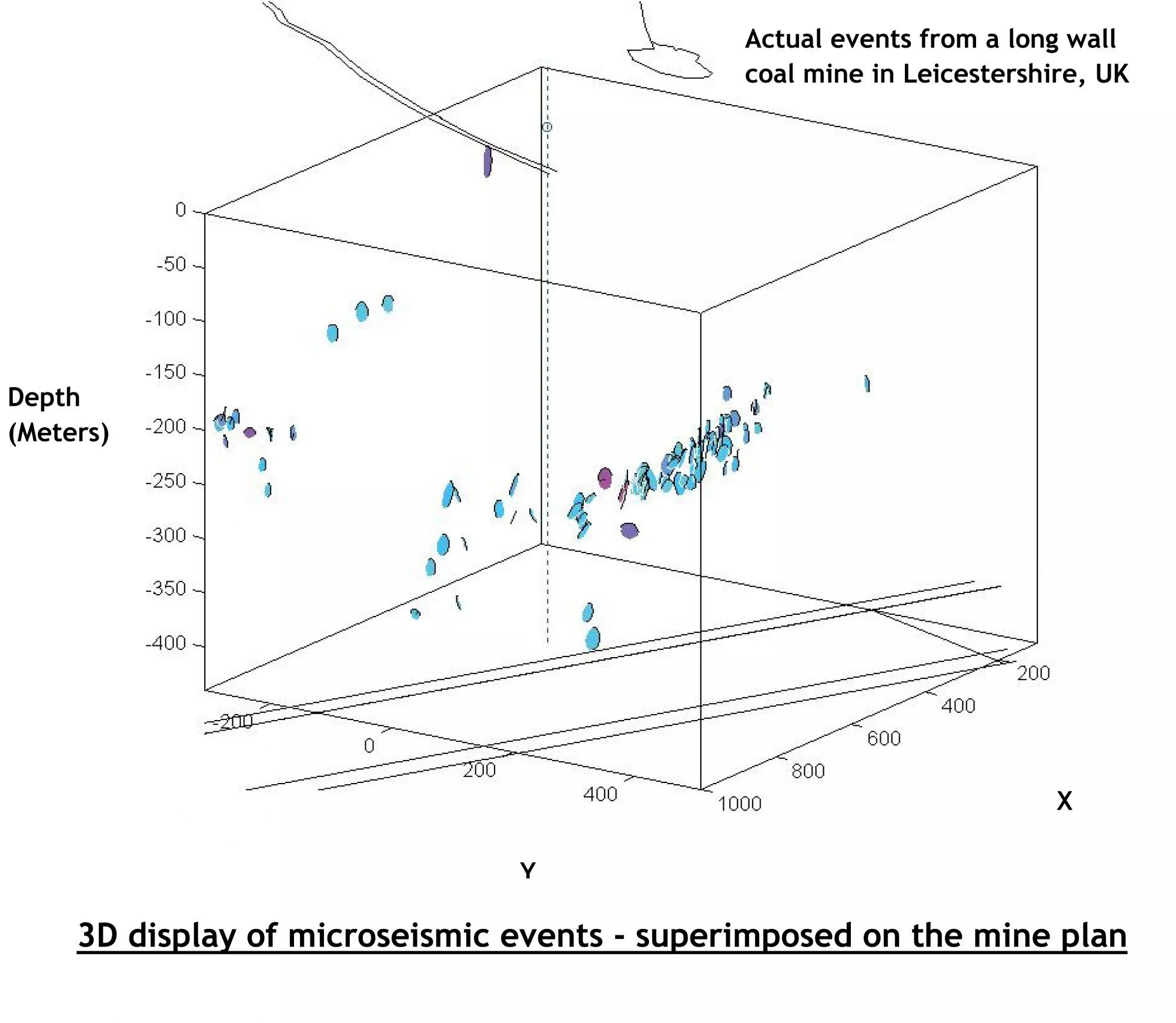SP2 Model MM2 for deep mine monitoring, without the need for bore holes.
The range from each sensor is up to 1km horizontally and in depth. This offers a significant saving to installation costs.
The unique ability of SP2 to predict and, therefore, to provide advanced warning of an imminent or longer term collapse due to mine or tunnelling activities is a revolutionary step towards providing greater mine safety, and maximising output from a mine. In addition, SP2 detects the potential impact and threat of liquids, including moving water and shifting oil deposits. Voids may be detected by careful analysis of travel paths and event arrival timing.
SP2 uses sensors located on the surface above the mine, a 3D cubic model of microseismic events gives instant visual warning of a potential collapse in real time. Each event is located on the plan of the mine with a 360 degree rotating view.




